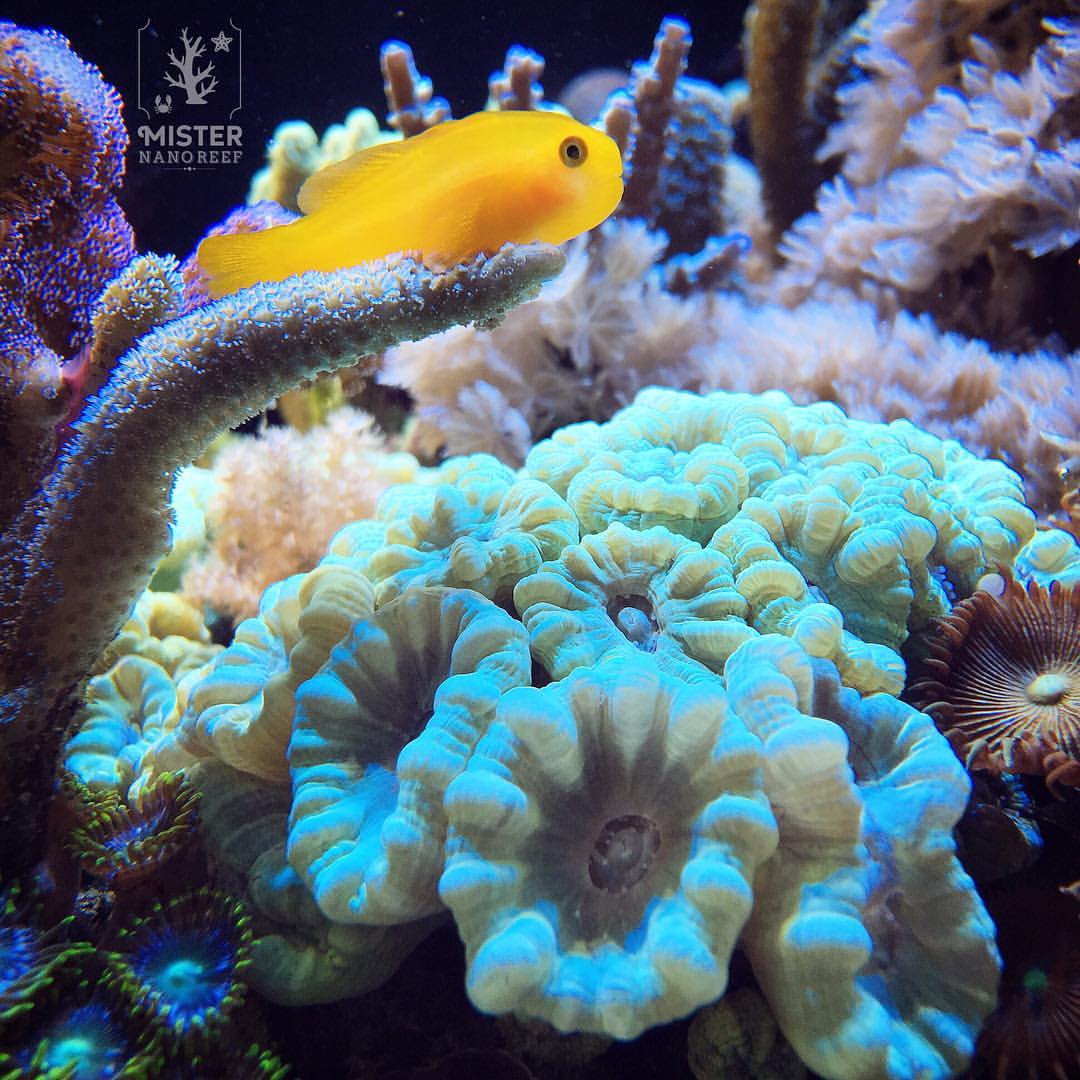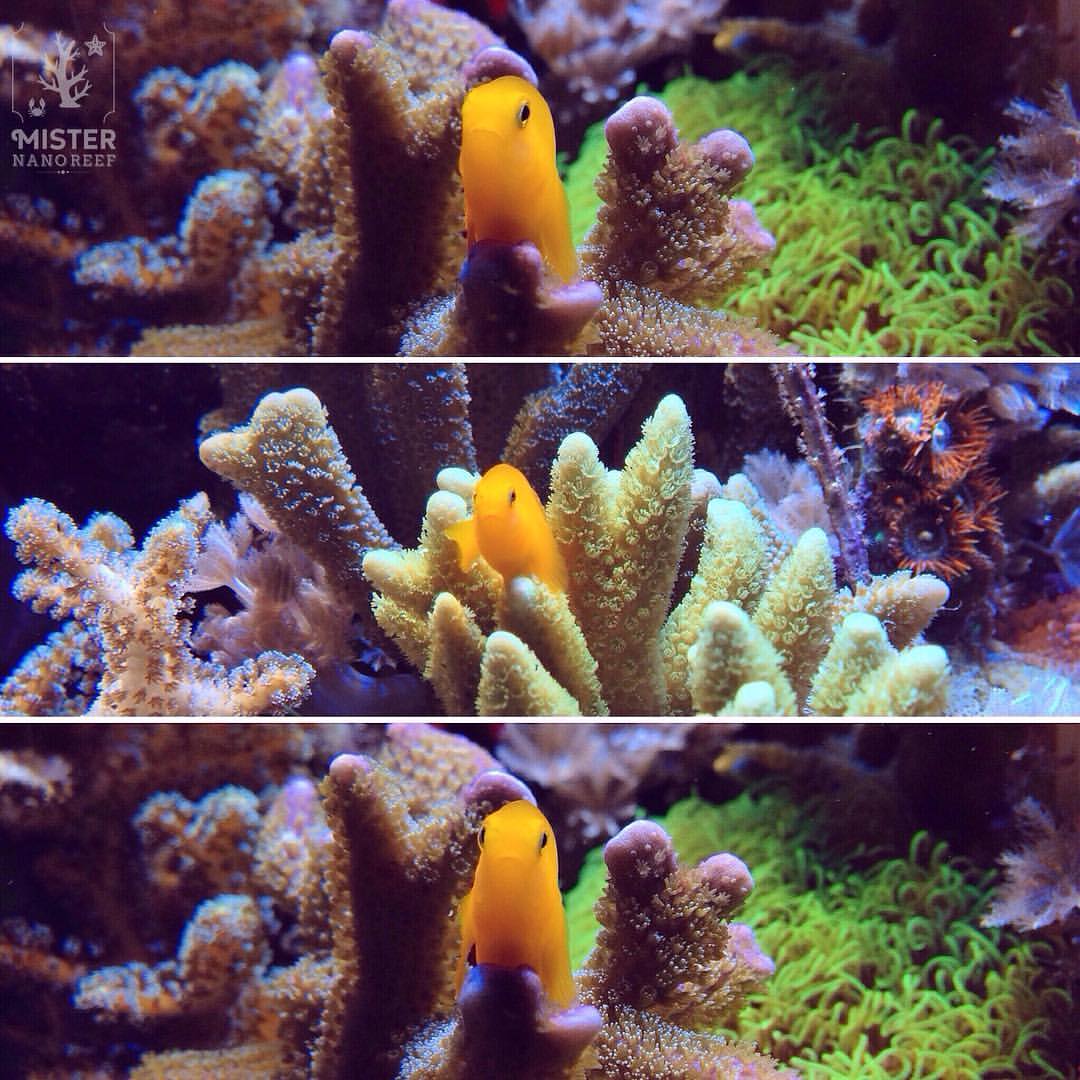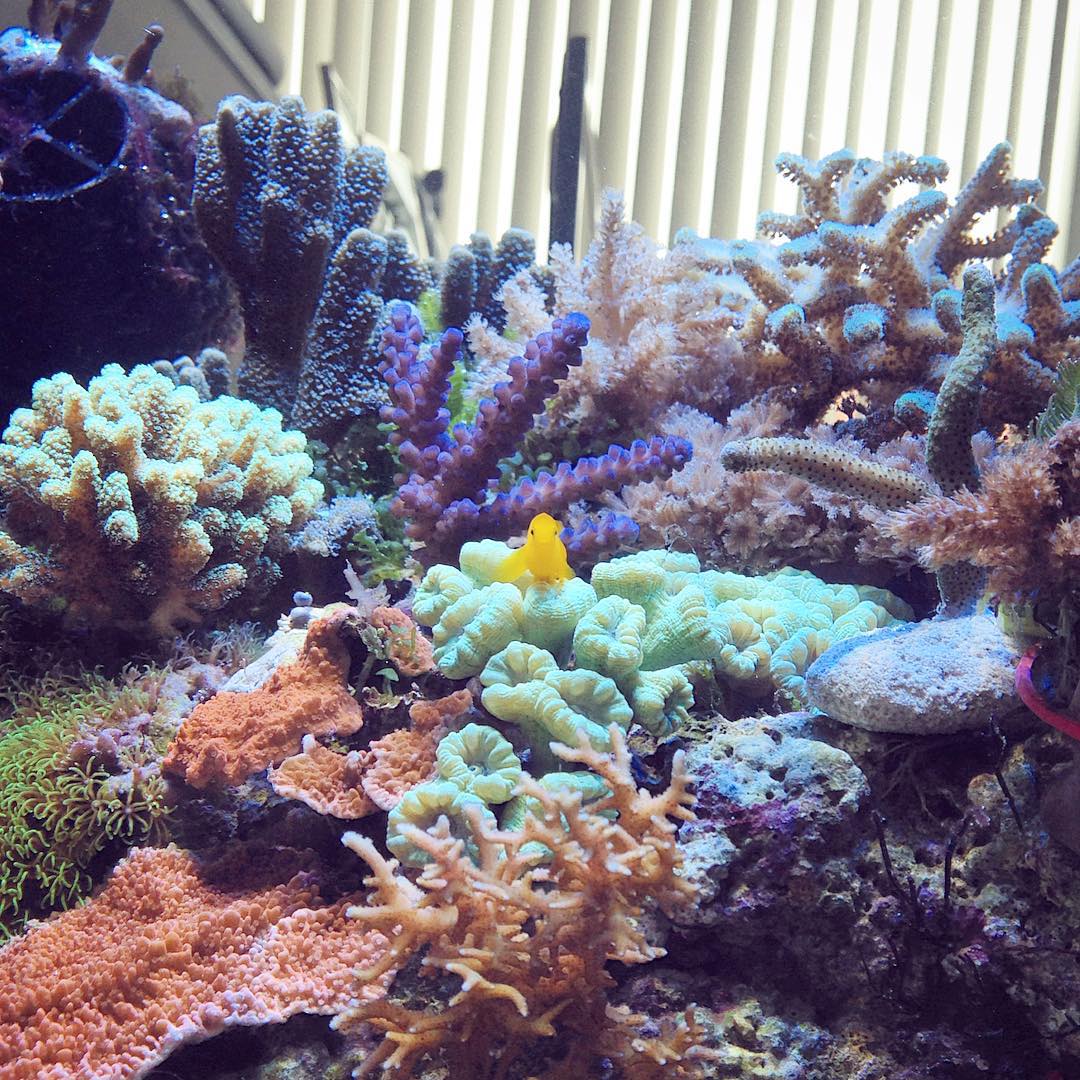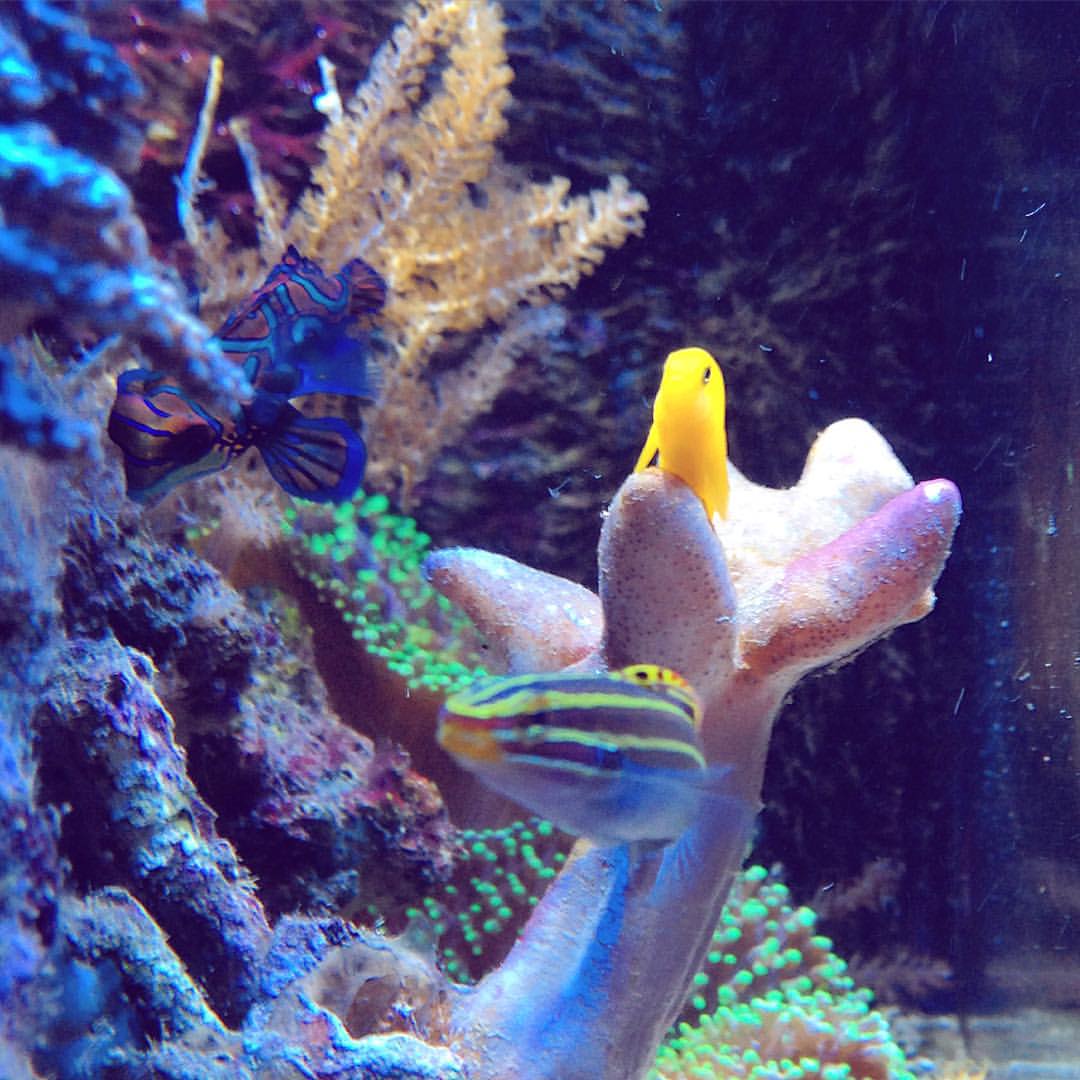The gobiodon okinawae, better known as the yellow clown goby, is a great addition to any saltwater aquarium. The bright yellow color, the massive head to body ratio and the little Diva attitude… just a few of its characteristics that will make you fall in love with this little critter, as I did with “Bumblebee”, my own little yellow clown goby, that sadly just passed away some time ago due to “old” age. Keep rocking in “fish heaven” little buddy!
The king of the (underwater) world

You will see the yellow clown goby in plain sight on top of the highest layer of corals most of the time, chilling on sps, waiting until a piece of food comes along, checking you out more than you check him out and if he’s hungry, well you will know…
They have a small swimming bladder, so they cannot swim for a long consecutive time, but when they see you in front of the tank, they will leave the comfort of the luxury coral couch to give you a little clue in the sense of “Dafuq? Where’s my food?”. Yup, they can be quite entertaining.
Diva with a high food standard
Fish coming from the wild (I’m a big supporter of buying captive bred fish) can sometimes have a hard time recognizing certain types of food as food they can eat. For the yellow clown goby, this can be a serious problem. It wouldn’t be the first time they die from starvation, although you provide them with enough food, just because they do not want to eat.
From my personal experience, I would advise to try new varieties of food until you see the kind he or she likes. Even better is to try different kinds of frozen food, as this is the food that comes the closest to “real life” food they would find in the wild.
I got Bumblebee eating after 4 days (mostly the average where they start to feel comfortable and start to eat) with frozen mysis (from aqua nutrition). The funny thing is, since I started giving frozen lobster eggs, he wouldn’t eat anything but that, so I sometimes drove for an hour to get a new stock of frozen lobster eggs as I couldn’t find it anywhere in the neighbourhood anymore.
Cute, but not always sweet

I started out with 2, as I wanted to get a mated pair. Reports say that when paired up, if they have the same sex, the larger one of 2 females will change sex to a male and the smaller one of 2 males, will change sex to a female. But after almost 3 weeks together, one was always attacking the other every time he came close. It was so bad that chunks of the fins were missing so I decided not to wait it out as I had the feeling I would end up with a dead one. I figured the best thing to do was to move one to another tank so I gave the biggest one to a friend to give him a nice home in his tank.
Yes, yellow clown gobies are very territorial and will attack their own species when invading “their territory”. They will even stand up against fish 10 times their size. (“respect my authoritah!”) This does not mean however that it is not reef safe. Due to its small size it will only create havoc on its own kind, so in a nano reef, it is best to only put 2 yellow clown gobies if you’re absolutely sure they are a mated pair, otherwise stick with one.
Not best friends with acropora

If you are planning to keep acropora, it is best not to combine it with a yellow clown goby as they are not really compatible. I couldn’t keep any acropora the entire time Bumblebee was still alive.
The polyps were never extended during the day and it soon became obvious after Bumblebee died, that the only piece of acropora I still had left, is now thriving… fully extended polyps the entire time and finally some growth.
So it is clear that the yellow clown goby was always nipping it. (I’ve actually seen him doing this quite a lot). As a mated pair, they bite chunks out of acropora to lay their eggs there so in any case… not best friends.
Reef safe!

I want to point out once again that they DO are reef safe. Besides the acropora issues and their territorial nature, they have such interesting characters and once you get them to eat, they are hardy fish that will put a smile on your face every time they come to greet you.
So if you’re up for the challenge and take the above points into consideration, I would definitely recommend this little fish for your (nano) reef.
Do you have a yellow clown goby or you’re thinking about getting one? I would love to know your experience with it below. Did you give it a name? Did you run into other problems? What do you like most about it? Join the discussion!


Great article, entertaining and engaging.
I agree with you entirely.
Thanks, Carlos! Glad you like it!